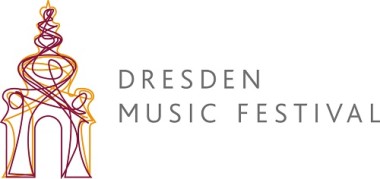
 Germany Dresden Music Festival [2] – Britten, Shostakovich: Augustin Hadelich (violin), Dresden Philharmonic Orchestra / Michael Sanderling (conductor). Kulturpalast Dresden, 13.6.2025. (CC)
Germany Dresden Music Festival [2] – Britten, Shostakovich: Augustin Hadelich (violin), Dresden Philharmonic Orchestra / Michael Sanderling (conductor). Kulturpalast Dresden, 13.6.2025. (CC)

Britten – Violin Concerto in D minor, Op.15 (1939)
Shostakovich – Symphony No.8 in C minor, Op.65 (1943)
Great programming here: a celebration of the famous meeting of Benjamin Britten with Dmitri Shostakovich and their ‘besondere Freundschaft’ (special friendship), as the programme booklet put it.
Britten’s Violin Concerto remains a rarity in the concert hall: my first experience of it was a revelation (Hallé Orchestra under Arvid Jansons, with Boris Gutnikov). Augustin Hadelich, Artist-in-Residence at the Dresdner Philharmonie, was the soloist on this occasion (the concerto was first played in Dresden in 1948 in the Deutsches Hygiene-Museum, soloist Marc Hendrike under Heinz Bongartz; it was last heard with James Ehnes as soloist at the Kulturpalast in December 2018, conducted by Juanjo Mena).
The concerto was written for the Catalan violinist Antonio Brosa, who premiered the work in 1940 at Carnegie Hall with the New York Philharmonic under Barbirolli (the score was to undergo revisions in 1950, 1954, and 1965).
This performance was particularly notable for the detail in the orchestra, and Hadelich’s clear resonance with the score (he has recorded it, with the WDR orchestra under Cristian Mӑcelaru), but greater detail of Britten’s scoring was clearer here in Dresden. The opening percussion, with the characteristic rhythm of the first movement on timpani, was performed ppp, the bassoon perfectly placed. Hadelich’s entrance was one of lyric beauty, while Michael Sanderling brought out the contrasts in the score, the ensuing Agitato certainly that. Hadelich is astonishingly accurate, while possessing a remarkably sweet upper range. One daring portamento snuck its way in (it worked), and how slinky the strings at the return of the opening. Perhaps the very final harmonic for the soloist did not quite work; but such is live performance.
The Scherzo had tremendous momentum (markedly more than on Hadelich’s recording), while Sanderling brought out the individuality of Britten’s writing (sustained woodwind dissonances foregrounded effectively). Hadelich’s extended cadenza was compelling, but the great achievement here was the smooth move into the final Passacaglia. And, from that point, what a journey Sanderling and Hadelich took us on; far deeper than on Hadelich’s commercial recording, the trombones intoning the bass theme with great solemnity, the strings dark in response. Perhaps it is here that Britten is at his most Shostakovich-like, certainly in terms of import. Trumpets seared through the texture as the intensity built. This is a full quarter-hour exploration of not only motif, but emotions. The end hung in the air; one encore, the Sarabande from Bach’s Second Partita for solo violin.
Shostakovich’s mighty Eighth Symphony followed. It is a work that can overwhelm. Under Sanderling, this was a performance of the Eighth of masterly control, the opening violins conjoined to present a line of perfect unanimity. Sanderling understands Shostakovich on the larger level – the extended crescendos carefully calibrated – and also on a more micro-level there was X-Ray detail everywhere apparent. Sanderling is able to see the larger picture in Shostakovich’s mammoth symphonic statements, and the result is top-calibre interpretation.
Whether the Allegretto was a true ‘allegretto’ is up for discussion (it felt just under, losing some momentum in the process) but there was spectacular solo playing, notably from the piccolo. It was the huge sound of the violas which impressed in the Allegro ma non troppo (they made the fiendishly difficult sound easy); the first trumpet (Christian Höcherl, another bright star.
But how masterly Sanderling morphed the Largo into the final Allegretto, perhaps mirroring the transition between the last two movements of the Britten. This was a performance of contrasts, physical fortissimos against whispered pianissimos. The Dresden Philharmonic is a force to be reckoned with, a chameleon just as at home in Britten as in Shostakovich (Sanderling ensured each composer’s ‘voice’, their characteristic sound, was absolutely honoured).
A most satisfying evening.
Colin Clarke
Featured Image: Augustin Hadelich © Oliver Killig
